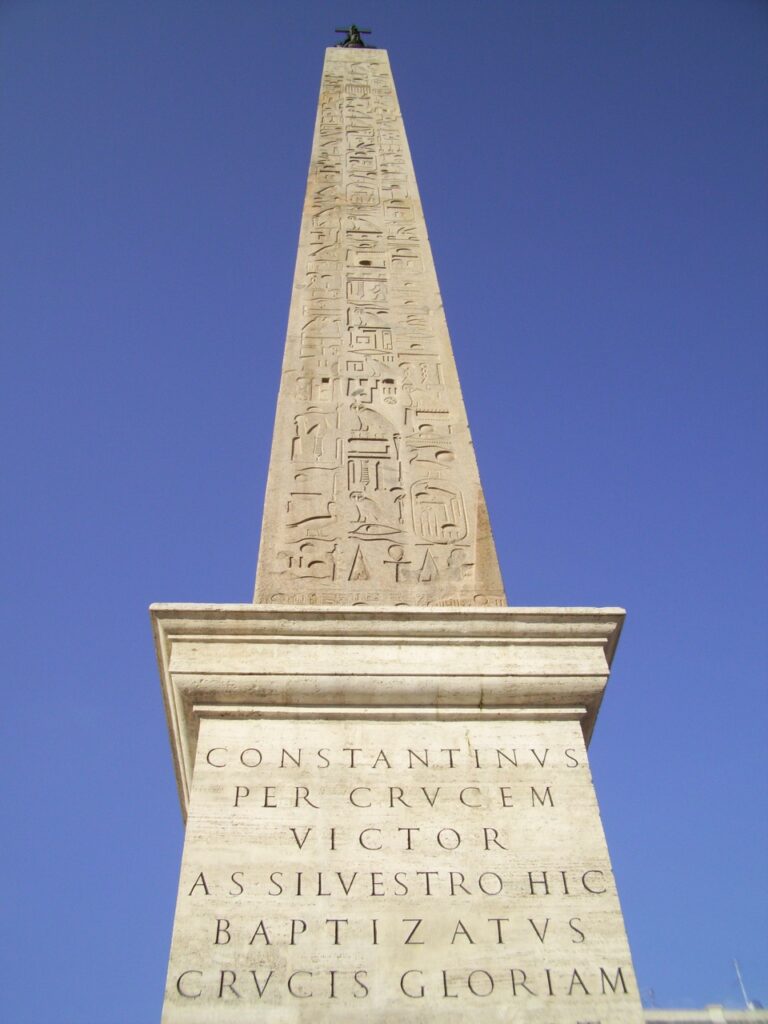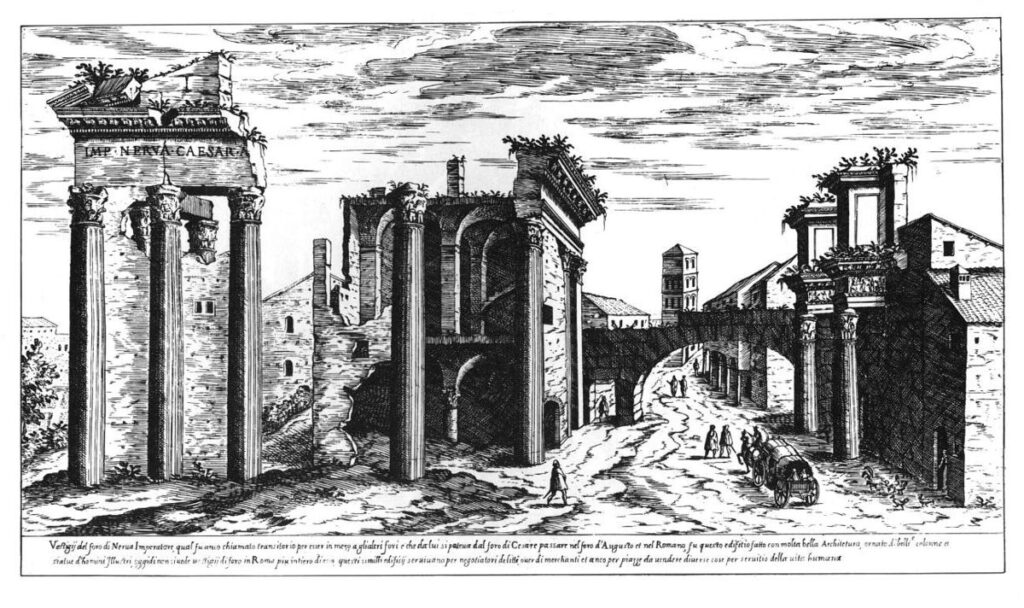Barberini Palace

The Palazzo Barberini, located on Via delle Quattro Fontane in Rome, is one of the most representative buildings of Italian Baroque architecture. Its construction, started in 1627, was commissioned by Pope Urban VIII of the Barberini family, and involved three of the greatest architects of the time: Carlo Maderno, Gian Lorenzo Bernini, and Francesco Borromini. […]
Lateran Obelisk

The history of the Lateran Obelisk begins in the ancient temple of Karnak, dedicated to the god Amun-Ra, in the distant 14th century BC. Here, under the reign of Thutmose III, this magnificent red granite monolith was erected as part of a pair of twin obelisks, silent witnesses to the power and greatness of the […]
Ludus Magnus

The Ludus Magnus, located between via Labicana and via di San Giovanni in Laterano, near the Colosseum, is the largest and most famous of the four gladiator schools in ancient Rome. Built by Emperor Domitian between 81 and 96 AD, the Ludus Magnus served as a training school for gladiators destined to fight in the […]
National Gallery of Ancient Art

The National Gallery of Ancient Art in Rome, articulated between two prestigious historical buildings, Palazzo Barberini and Palazzo Corsini, represents one of the most important collections of ancient art in Italy. These two palaces are not only custodians of extraordinary works of art, but are themselves testimonies of Baroque architectural magnificence. Palazzo Barberini, located on […]
Trajan’s Forum

The Forum of Trajan, inaugurated in 112 AD, represents the last and most grandiose of the Imperial Forums of Rome, built by the emperor Trajan to celebrate his military victories, particularly the conquest of Dacia. The project, supervised by the architect Apollodorus of Damascus, reflected Trajan’s ambition to create an unprecedented public space that combined […]
Forum of Augustus

The construction of the Forum of Augustus is an extraordinary testimony to the ambition and urban vision of Emperor Augustus. Started in 42 BC and inaugurated in 2 BC, the forum was conceived as a political, social, and religious center of Rome, intended to celebrate Augustus’ military victories and promote his image as a divine […]
Forum of Nerva

The Forum of Nerva, also known as the Transitory Forum, is one of the five Imperial Forums of Rome, built by the emperor Domitian and completed and inaugurated by his successor, Nerva, in 97 AD. This forum served as a link between the forums of Caesar and Augustus, the Forum of Peace, and the Roman […]
Fountain of the Catechumens

The Fountain of the Catechumens, located in the picturesque Piazza della Madonna dei Monti in Rome, is a precious example of Renaissance art and engineering. Designed by Giacomo Della Porta and executed by Battista Rusconi in 1589, this fountain represents a fundamental element in understanding the urban evolution and water supply of Rome during the […]
Colosseum

The Colosseum, also known as the Flavian Amphitheater, is one of the most iconic and visited symbols of Rome and the entire Roman civilization. Built in the heart of the Roman Empire, the Colosseum has witnessed a rich and fascinating history, filled with grand spectacles, gladiatorial battles, and public events that have shaped the collective […]
Church of San Pietro in Vincoli

San Pietro in Vincoli is a Roman Catholic basilica located on the Oppian Hill in Rome, famous for housing the tomb of Pope Julius II and the statue of Moses, a work by Michelangelo. The church is dedicated to Saint Peter and takes its name from the chains (vincoli) that, according to tradition, were used […]

